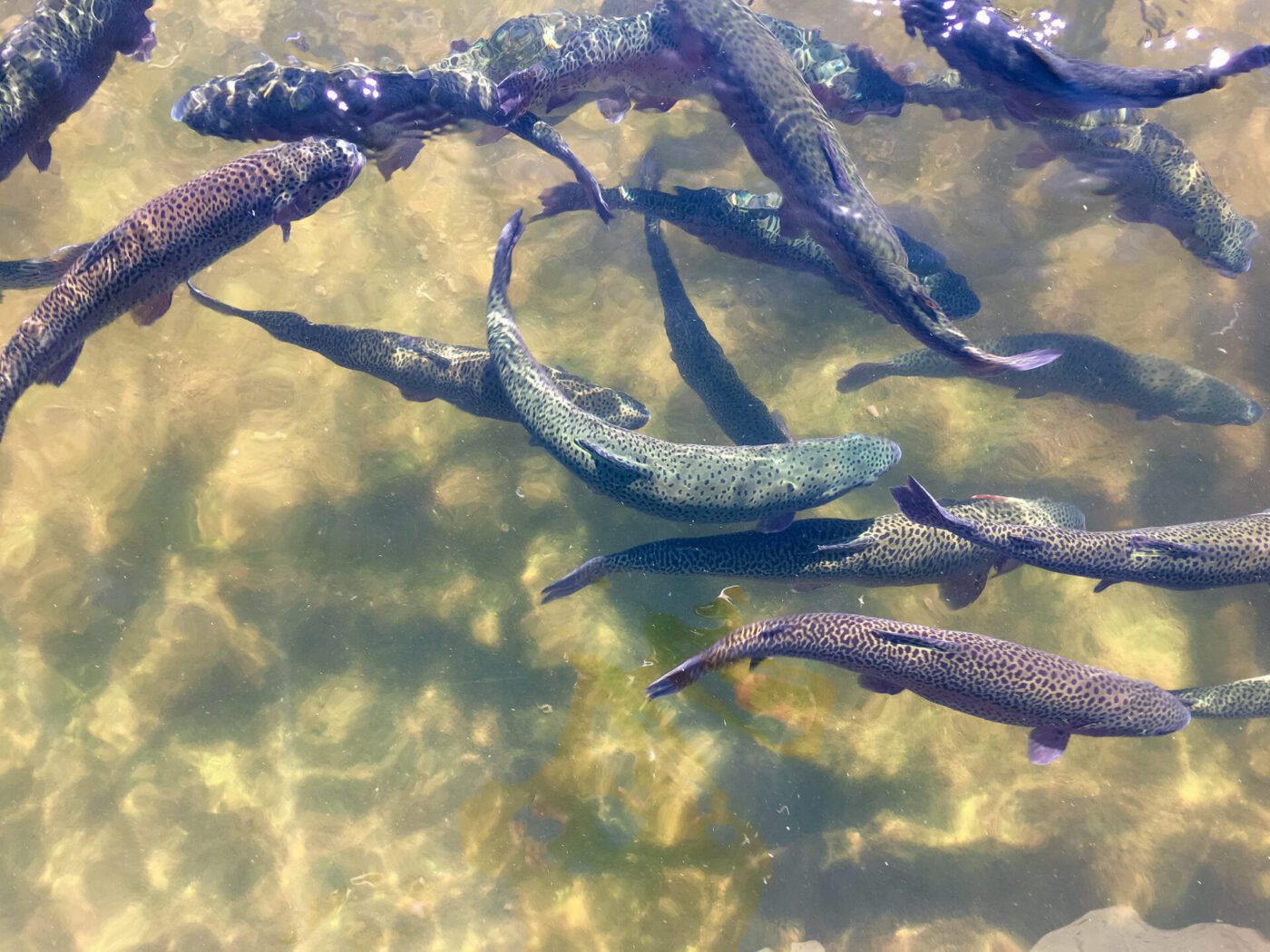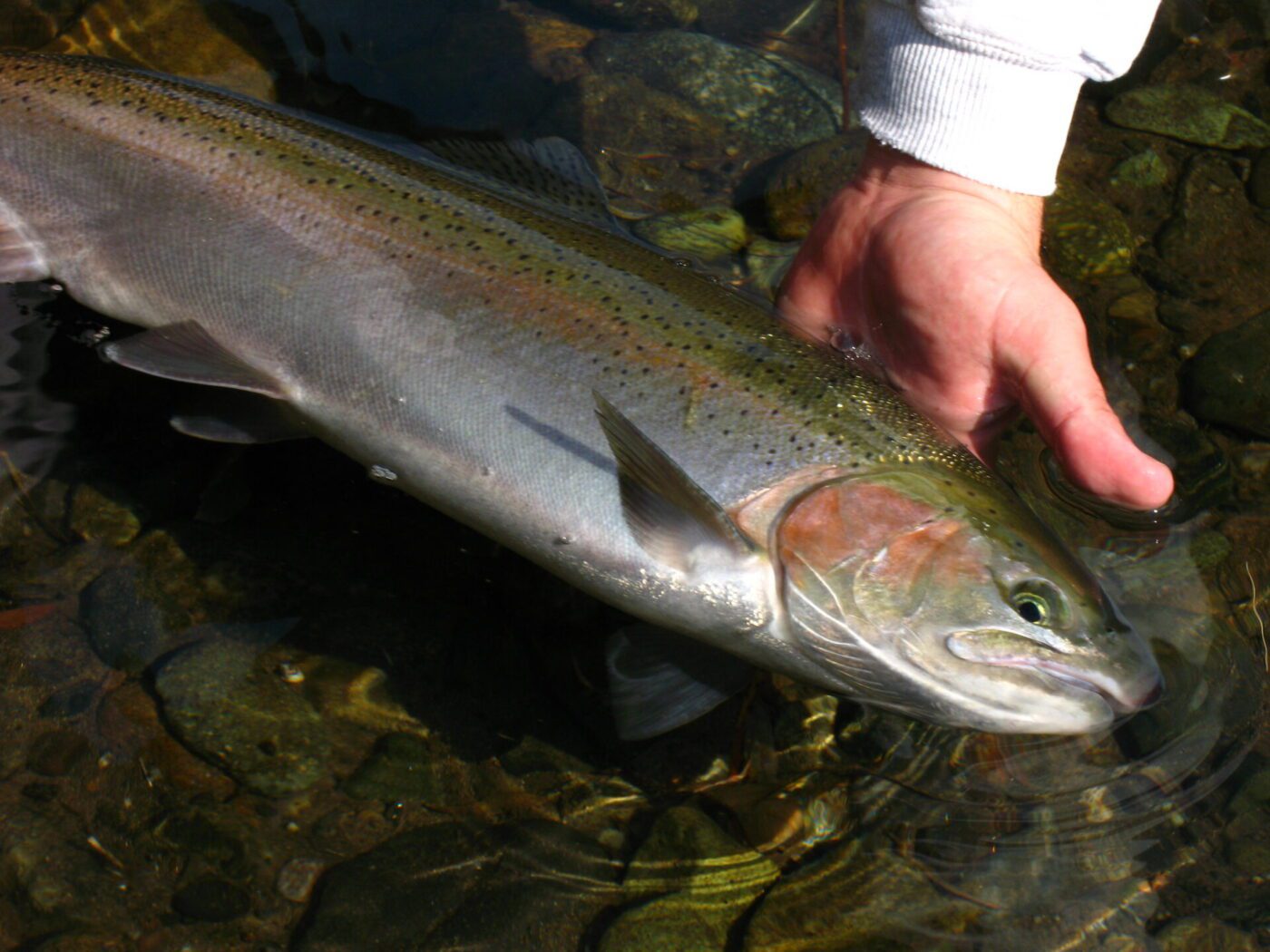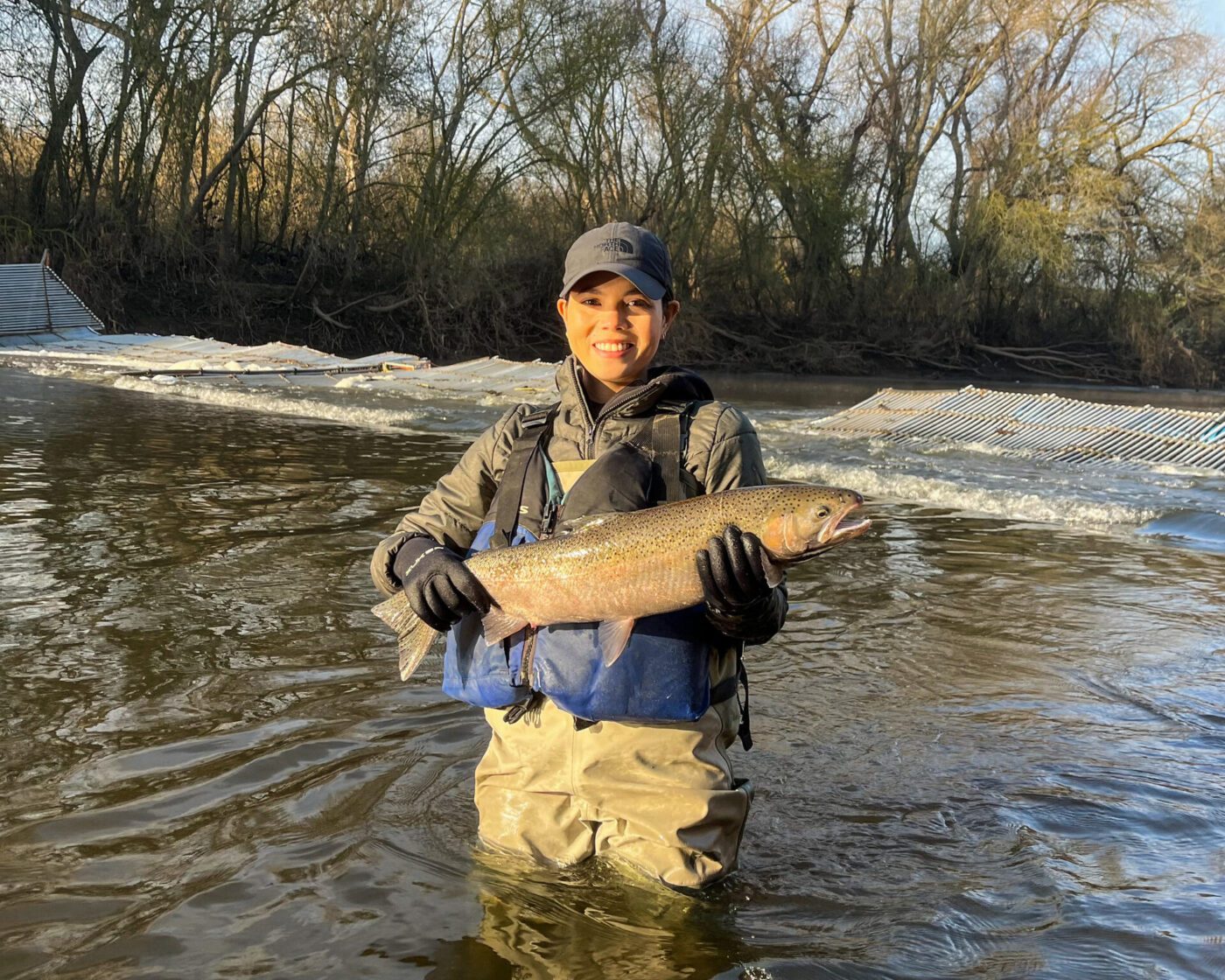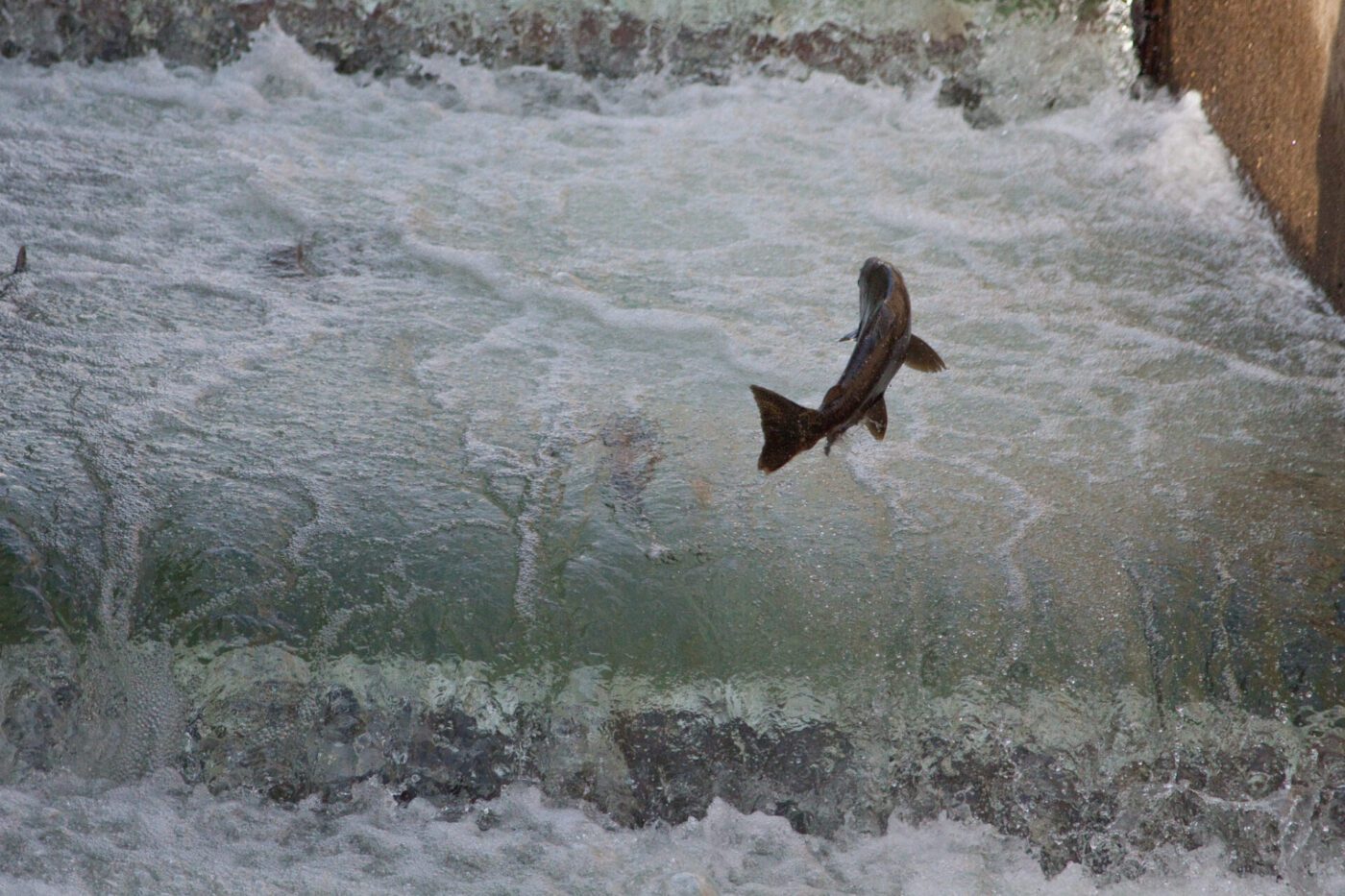Monday March 25, 2024

Steelhead (Oncorhynchus mykiss) exhibit some of the most diverse life history traits among all Pacific salmonid species and play major cultural, economic, and recreational roles throughout the Pacific Coast. Steelhead are unique from their resident rainbow trout counterparts in that they follow an anadromous life-history, meaning they migrate to the ocean as juveniles and return to spawn in freshwater streams and rivers as adults. Rainbow trout, on the other hand, remain in freshwater streams for their entire life. Unlike most of their Pacific salmonid cousins, steelhead are iteroparous, meaning that they can spawn more than once in their lifetime. This adaptation allows steelhead to have a more flexible lifecycle that can be advantageous during warmer or drier seasons, especially near the southern end of their distribution in California’s Central Valley.

An adult steelhead.
California Central Valley (CCV) steelhead are considered a distinct population segment (DPS) of steelhead, and have been listed as threatened under the Endangered Species Act since 1998. There are several threats that have led to steep declines in CCV steelhead numbers. Some of these include the construction of dams on major tributaries of the Sacramento and San Joaquin Rivers, obstructing large portions of historic steelhead spawning habitat, and increasing frequency and severity of droughts throughout California. Hatcheries have been established throughout the Central Valley to mitigate some of these threats and support a larger recreational and commercial steelhead fishery. Hatcheries that produce and rear steelhead in central California include the Coleman National Fish Hatchery, Feather River Fish Hatchery, Nimbus Fish Hatchery, and Mokelumne River Fish Hatchery. Monitoring conducted from 1998 to 2021 suggested that 84% of steelhead captured in the San Francisco Estuary are of hatchery origin.

Nimbus Fish Hatchery.
Steelhead hatcheries have contributed significantly to steelhead survival in the Central Valley, however, some unintended consequences have arisen as a result of hatchery management practices. A recent study published in the Canadian Journal of Fisheries and Aquatic Sciences revealed that the diversity of life-histories, also called biocomplexity, in Central Valley hatchery steelhead has decreased over a 70 year period (Huber et al. 2024). Biocomplexity is vital for the resilience and survival of steelhead, especially in the face of a changing and warming climate. The relationship between diversity and resilience is known as the “portfolio effect,” because similar to finance principles, it is beneficial to spread risk across a diverse population (or portfolio).

An adult steelhead captured on the Stanislaus River.
The authors of the study compiled juvenile hatchery release data from all four Central Valley steelhead hatcheries from 1948 to 2017. They focused primarily on the number of fish released, biomass (mean fish mass per release group), release timing, release location, fish length at release, age at release and life stage at release. A statistical analysis of this expansive dataset found that hatchery releases have shifted over time to earlier and narrower release timing windows. The results also showed that smolting (beginning the journey to the ocean) at age one was the dominant life history present in the majority of hatchery releases, reducing overall age structure complexity in hatchery-reared steelhead. Over time, the Central Valley hatchery steelhead portfolio has diminished in diversity due to the controlled nature of hatchery release practices. It is reasonable to expect that hatcheries will operate in a manner to maximize efficiency and production, but these practices can end up being detrimental in the long run. Similar reductions in biocomplexity have been noted in fall-run Chinook salmon (Oncorhynchus tshawytscha) from hatcheries using similar release practices.

The fish ladder at Nimbus Hatchery.
The authors provide several management recommendations to improve diversity and population stability of steelhead in the Central Valley. One suggestion focuses on introducing biocomplexity early in the rearing process by having managers select returning adult fish (broodstock) throughout the entire spawning run, rather than just selecting the earliest arriving fish. Interestingly, run-timing is an inherited trait in steelhead, so greater diversity of run-timing in the parent fish can lead to higher biocomplexity in the resulting offspring. They also recommend hatching fry over periods that mimic natural hatching timing and patterns, and releasing fish at varying sizes depending on environmental conditions. The Mokelumne River Hatchery has implemented a pilot rearing program dubbed the “Natural Rearing Enhancement System” that strives to create a more natural rearing environment for juvenile steelhead and even incorporates enrichment such as predator training to increase survival in the wild. In addition to these suggestions, the researchers also recommend that hatcheries release fish closer to their birthplace to avoid the straying of adult fish when they return to spawn. Habitat connectivity and enhancement will also be a very valuable component of steelhead resilience and survival, especially as global climate continues to change and conditions in the Central Valley become more erratic and extreme. A combination of adjusting hatchery practices to produce more diverse and resilient fish and continued habitat restoration efforts can give Central Valley steelhead a better chance at a brighter future.
